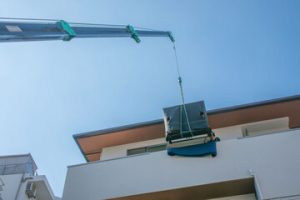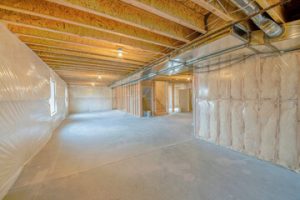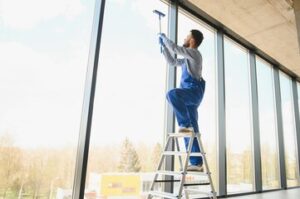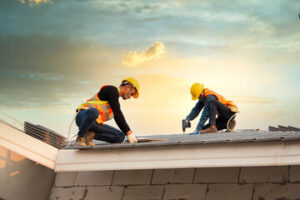Piano Moving Denver is a complicated, time-consuming task that’s better left to professionals. If you decide to go the DIY route, it’s essential to prepare by clearing a path and measuring all doorways, staircases, and hallways to make sure there’s enough room to maneuver the piano.

Rally a few strong friends to assist; more hands means less strain on everyone involved.
A piano is a specialized piece of furniture that requires special care during the moving process. Due to their size, weight and delicate mechanisms, even a minor bump during transport can damage the instrument or injure the people trying to move it. A successful move requires careful planning and a team of movers experienced in handling pianos.
While it’s possible for an amateur team to succeed in a DIY move, it’s not recommended. Not only is there a high risk of injury, but a DIY move can be extremely costly. The costs of equipment such as dollies, straps, and blankets can quickly add up and may outweigh any savings. Also, homeowners’ insurance may not cover the cost of any resulting damages.
To prevent damage and injuries, it’s crucial to prepare the piano before transporting. This includes disassembling the piano if possible, and wrapping it in padding for protection. It’s also important to map out the route in advance and clear all hallways, doors, and stairs. For safety, a team of at least four strong helpers should be assembled to lift and carry the piano.
In addition to a team of competent movers, a successful piano move requires specialized equipment. A good starting point is to obtain a piano skid or dolly, moving blankets and straps, as well as an appropriate truck for transport. Using these supplies can significantly reduce the risk of damage while ensuring the instrument is secured throughout the journey.
It’s important to remember that pianos are heavy, awkwardly shaped instruments. Their unique characteristics can present a logistical challenge when navigating stairs and tight turns. For example, upright pianos must be carefully maneuvered through doorways while balancing their weight evenly. Baby grand pianos require additional consideration, including the removal and packing of their legs and music stands.
Professional movers are trained to assess the type and condition of each piano. They also have the experience necessary to safely transport these delicate instruments over long distances. As such, enlisting their services can save time and money while reducing the risk of injury to your family or employees.
Packing
Pianos are heavy, awkwardly-shaped instruments with many fragile components. If you don’t properly protect them, they are prone to damage during the move and transport process. A professional piano moving company has the knowledge, equipment and training to do this correctly and safely. They can take the stress, risk and cost out of this task for you, so you don’t have to worry about damaging your beloved instrument.
Regardless of whether you have an upright or grand piano, there are several important steps to follow before the big day. You’ll want to start by packing the instrument carefully. This includes removing all loose items (music books, metronomes etc.) and wrapping all exposed surfaces in protective pads. Be sure to wrap the piano’s legs and pedals in cushioning as well.
Once you have all your supplies, it’s time to begin the actual move. For a safe and efficient move, you’ll need to coordinate with the other people involved in the process. Ideally, you should have at least four people. Two will be responsible for lifting the piano while the other two will guide it and handle the equipment. It’s also a good idea to set up some way to communicate during the move, such as using hand signals or vocal communication.
Prioritize moving the piano at the beginning of your move. This will ensure that the piano is placed in its new home first, and it won’t be squeezed or damaged by other items during the transport. It’s a good idea to keep the piano on a skid board during this step, as this will help with its mobility.
Once the piano is loaded into the vehicle, it’s a good idea to place it with its front against the wall of the truck or van. This will help keep the instrument from shifting during transport and protect it from damage to the interior of the truck. It’s important to drive slowly and carefully during transport, avoiding sudden stops or sharp turns that could cause the piano to tip over. Once the piano is in its new home, it should be unloaded from the dolly, unwrapped and secured to the side of the truck, and then inspected for any damage or wear during the transport process.
Transporting
When you’re ready to take your piano out for a ride, the process can be daunting. It requires a lot of preparation, muscle strength, and knowledge of how to handle such a large and delicate instrument. Whether it’s local or long distance, a professional will have the experience to move a piano without any damage. This is crucial to the safety and integrity of the piano. It also prevents any costly repairs down the line, which can be quite expensive.
While some household movers might claim that they can move a piano, the truth is that they probably can’t. Most people know that a piano is very heavy, and the weight distribution is uneven. This makes it very difficult to maneuver, especially when moving it down the stairs or up the elevator at a new location.
Most of the time a piano is moved onto a dolly, which is a flat trolley with big strong casters on it. The movers put the dolly underneath the piano, and use a strap known as a “hump strap” to lift it up and steer it. Once it’s on the dolly, they usually take off the blanket and then put it in a truck for transport to the new home or venue.
The best movers will always be insured to protect the instrument and the house it is being transported to. A damaged piano can cost thousands of dollars in repair costs, and even if it’s not repaired it will be a stressful, expensive project to get back on track. Professional piano movers will ensure that the move is as smooth and safe as possible, saving you money and stress in the long run.
If you’re looking for a professional to help with your piano moving, make sure to choose one that offers insurance and will provide a quote upfront. This way you can avoid hidden fees, and ensure that the price is fair. In the end, the peace of mind is well worth the investment. And after all, who wants to deal with the stress of a broken piano?
Set Up
If you’re moving a piano into your new home, prepare the route with cardboard or old rugs to avoid scratches and scuffs. Lay these down where necessary, and make sure there are no obstructions or furniture blocking the path. It’s best to have at least three people to move the piano. One person will guide the dolly, while two or more will steady it from the sides. It’s important to keep a steady pace when moving, because rushing can cause errors that hurt you and your helpers and damage your walls, floors, or piano.
Before the piano is loaded into a truck, it’s best to remove the legs and pedals (if needed). You can then lower and secure the lid. Once in the truck, be careful to keep it upright — tilting it sideways is dangerous and can damage the instrument. If you’re using a van or pickup truck, it’s helpful to find out if they have a ramp that can be deployed to skip steps at the front door of your destination. Otherwise, it’s essential to get a dolly with soft rubber wheels that are at least 4” in diameter. Molded plastic dollies from UHaul or $20 carpet dollies with hard black wheels may not be able to handle the weight of your piano.
After the piano is unloaded, it’s a good idea to have a professional tuner come to touch up any harm caused during the move. All pianos are thrown off their tuning by vibrations and changes in humidity, so a quick tune-up is well worth the investment.
Once the piano is re-assembled, be careful to follow the directions in your instruction manual on how to properly set it up. Also, be sure to re-attach any pieces that were removed in preparation for transport (such as the legs on a baby grand). If you used protective blankets or sheets during packing, be careful not to scratch the piano while doing so. Finally, be sure to secure the piano in its final position using ratchet straps. You’ll need to refer to the labels you made when labeling boxes for this step as well.



